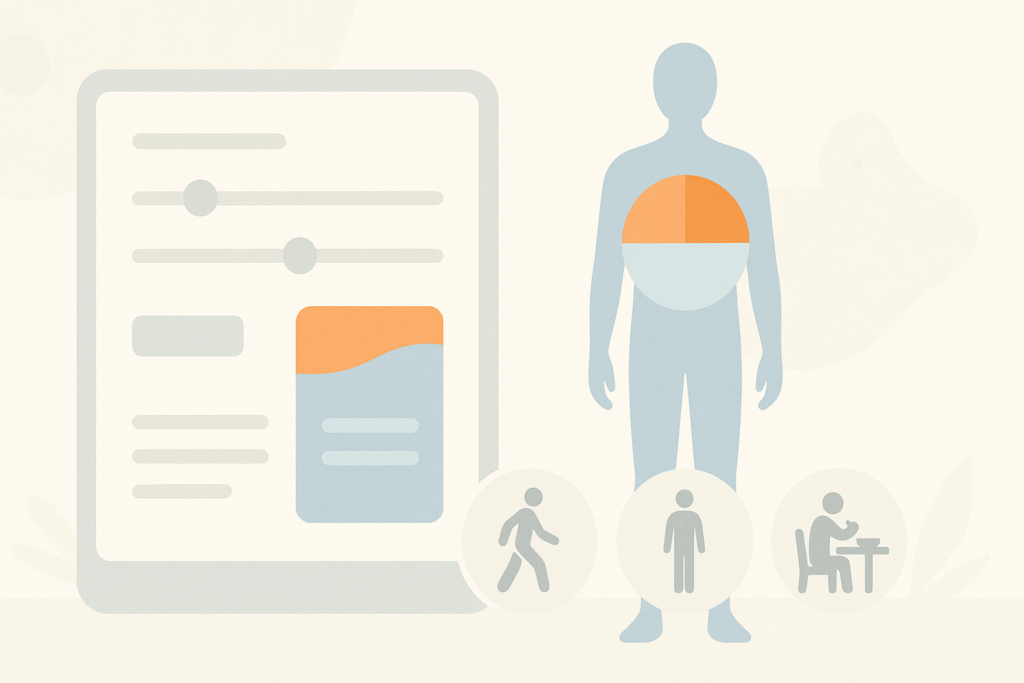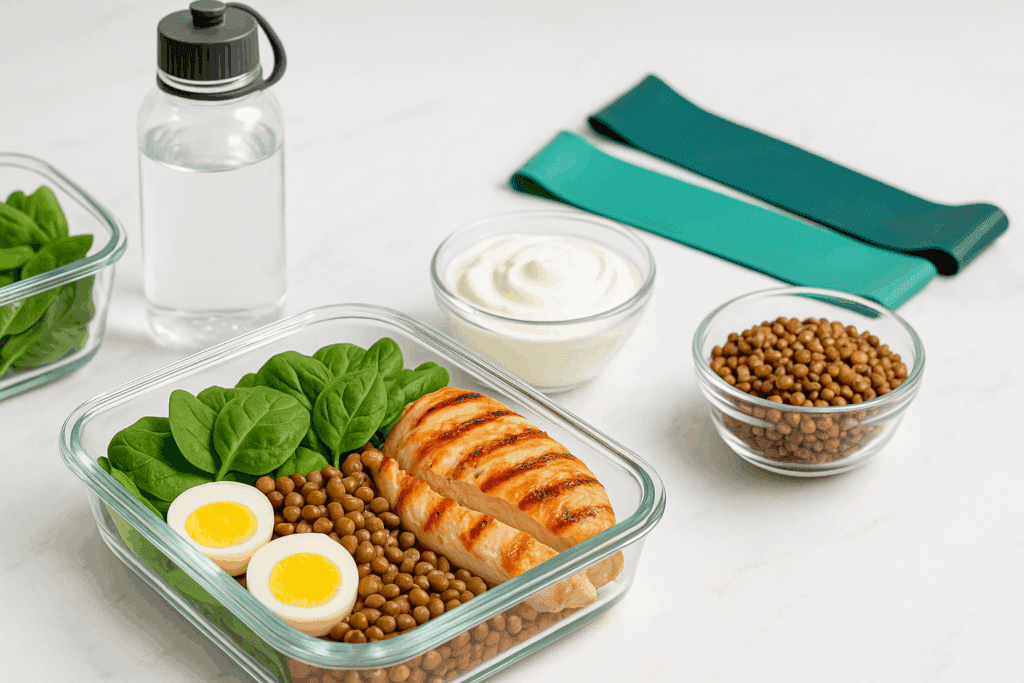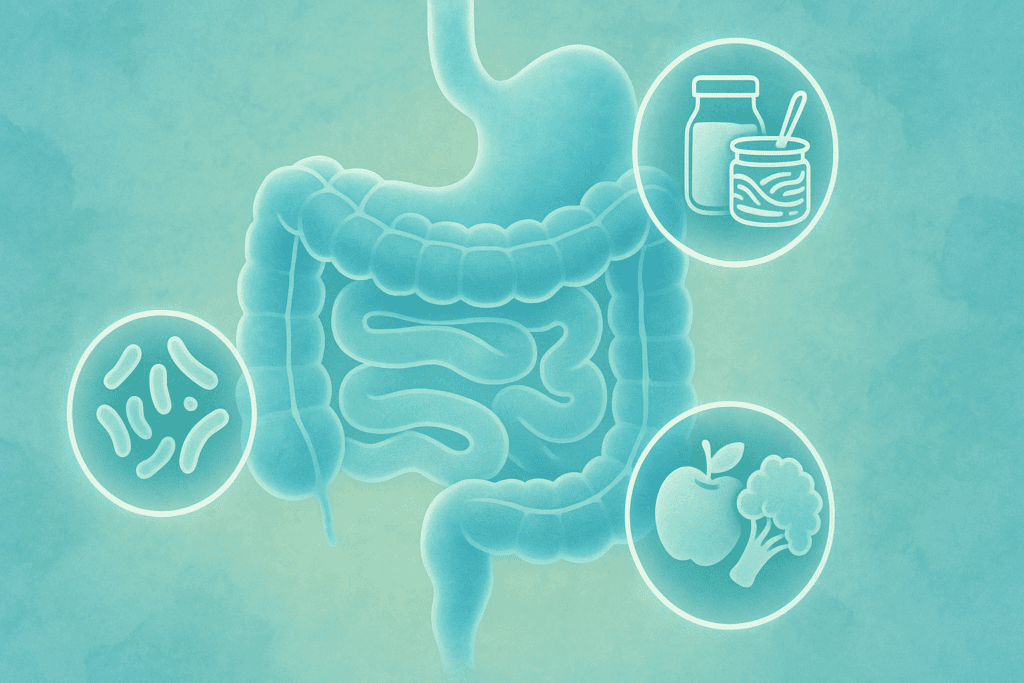The path toward better health often begins with a deeply personal decision to change. For me, that decision started with a question so many people silently ask themselves: Can I really become thinner in a healthy, sustainable way without harming my body or mind? Like many others, I had seen the quick-fix fads, heard the too-good-to-be-true promises, and watched others try, fail, and give up. But my journey was different because it was grounded in science, supported by expert insight, and guided by a desire not just to look thinner—but to feel healthier, think clearer, and move through life with vitality. This article shares how I became thin in a healthy way, using practical, evidence-based strategies that reveal how to become skinny in a week safely—without starvation, gimmicks, or unsustainable habits.
You may also like: Expert-Backed Weight Loss Tips for a Healthier Lifestyle: What You Need to Know for Long-Term Weight Control and Wellness
Redefining Thin: Why Healthy Weight Loss Is About More Than Appearance
When I first began this journey, I had to reconsider what “thin” really meant. To me, it wasn’t just about numbers on a scale or clothing sizes. It was about regaining energy, improving cardiovascular health, supporting hormonal balance, and building confidence rooted in true wellness. Many people who search for how to become skinny in a week are hoping for more than just aesthetic results—they want to reclaim control over their bodies. And while it’s possible to lose visible weight in a week, it’s vital that the methods used are medically safe and rooted in physiological understanding.
A week is a short time, but it can serve as a catalyst. With the right approach—supported by nutritional science, metabolism research, and physician-approved methods—it’s possible to trigger healthy changes in body composition. This transformation may involve reduced water retention, improved digestion, regulated blood sugar, and reduced inflammation, all of which contribute to feeling—and even looking—thinner. My story of how I became thin started by redefining thinness as an outcome of wellness, not just calorie restriction.

Building the Foundation: Understanding Your Metabolism and Daily Energy Needs
A crucial turning point in my transformation came when I stopped blindly counting calories and started understanding my body’s metabolic needs. Everyone’s metabolism is different, influenced by age, sex, body composition, and physical activity levels. Learning how to estimate my Total Daily Energy Expenditure (TDEE) helped me determine how many calories my body actually needed—not just to survive, but to thrive while still losing fat.
Rather than drastically slashing calories, which often backfires by slowing metabolism and causing fatigue, I took a moderate approach. I created a sustainable deficit of 300 to 500 calories per day through a combination of dietary adjustments and increased movement. By doing so, I was able to lose body fat without feeling deprived or compromising muscle mass. This method not only helped me discover how to become skinny in a week safely, but it also ensured the changes I experienced were part of a long-term shift toward better metabolic efficiency.

The Power of Protein: Building Lean Muscle While Burning Fat
One of the most significant lessons I learned on my journey was that not all calories are created equal. Protein plays a critical role in preserving muscle mass, regulating appetite, and supporting metabolic function during weight loss. When I increased my intake of high-quality protein—from sources like eggs, chicken, Greek yogurt, and lentils—I noticed immediate benefits. I felt fuller for longer, my energy levels stabilized, and I started to see changes in my physique that reflected improved muscle tone rather than just a lower number on the scale.
Consuming 1.2 to 1.6 grams of protein per kilogram of body weight each day became a cornerstone of my plan. Research supports this range as optimal for fat loss without muscle wasting. If you’re trying to figure out how to become skinny in a week, make sure your protein intake is adequate. It won’t just help with fat loss; it will also support recovery from exercise and reduce the risk of rebound weight gain.
Clean Eating: Choosing Whole Foods Over Empty Calories
Another key element in how I became thin was embracing the concept of clean eating. Rather than obsessing over every gram of fat or carbohydrate, I focused on food quality. I filled my plate with vegetables, fruits, lean proteins, healthy fats, and complex carbohydrates. This shift reduced my intake of added sugars, trans fats, and overly processed ingredients that had previously sabotaged my health goals.
Clean eating isn’t about perfection—it’s about making informed, consistent choices that prioritize nutrient density. Instead of packaged snacks, I chose raw almonds or a boiled egg. Instead of sugary drinks, I reached for water with lemon or unsweetened green tea. These simple swaps had a compounding effect on my health and appearance. Within days, I felt less bloated, had better digestion, and my skin even looked clearer. Clean eating empowered me to see food as fuel, not a source of guilt.

Hydration and Weight Loss: The Overlooked Secret Weapon
One of the most underestimated tools in my toolbox was proper hydration. Before this journey, I never gave much thought to how much water I drank. But as I began to prioritize hydration—aiming for at least 2.5 liters per day—I noticed profound changes. Drinking more water curbed my appetite, supported digestion, reduced water retention, and even boosted my energy levels.
When people ask how to become skinny in a week safely, they often look for complex answers. But sometimes, the most powerful interventions are the simplest. Water supports nearly every metabolic function in the body, including fat oxidation. It also helps the kidneys flush out waste products more efficiently, lightening the load on the liver. When I combined hydration with clean eating, the results became even more visible. I looked and felt lighter—not from dehydration, but from genuine improvements in body composition and wellness.
Smart Intermittent Fasting: Timing Meals for Maximum Impact
During my journey, I also experimented with intermittent fasting—a pattern of eating that restricts food to specific windows during the day. After consulting with a physician and reviewing current research, I decided to adopt a 16:8 schedule, where I fasted for 16 hours and ate during an 8-hour window. This structure wasn’t about skipping meals or starving myself; it was about optimizing hormonal rhythms, insulin sensitivity, and digestive rest.
Intermittent fasting helped me become more mindful of hunger cues, broke my habit of mindless snacking, and gave my body a chance to tap into fat stores for energy. Within a few days, I noticed that my cravings diminished, and I felt more focused throughout the day. While intermittent fasting isn’t right for everyone, it can be a powerful tool for those seeking to become skinny in a week without compromising health. As always, it’s essential to approach any dietary strategy with medical supervision and individualization.

The Role of Exercise: Movement That Matches Your Goals
Exercise played a vital role in how I became thin, but not in the way I initially expected. I didn’t need to spend hours doing high-intensity workouts or run marathons. Instead, I focused on consistency, variety, and movement that matched my fitness level. My weekly routine included brisk walking, bodyweight resistance training, yoga, and short bursts of high-intensity interval training (HIIT).
These forms of exercise supported fat loss while preserving lean muscle, improved cardiovascular health, and enhanced my mood. I discovered that exercising in the morning helped regulate my appetite throughout the day, while gentle stretching at night improved sleep quality. When choosing exercise, the key is not to overtrain or push yourself into exhaustion. Instead, find a movement pattern that you enjoy and can sustain long-term. Becoming skinny in a week safely involves building momentum, not chasing perfection.
Stress Management and Sleep: The Silent Influencers of Body Composition
No weight loss strategy is complete without addressing stress and sleep. For years, I underestimated how much chronic stress and poor sleep affected my metabolism, cravings, and body weight. Elevated cortisol levels—triggered by stress—promote fat storage, especially in the abdominal region. Sleep deprivation disrupts hormones like ghrelin and leptin, which regulate hunger and satiety.
To support my health, I began implementing relaxation techniques such as deep breathing, journaling, and mindful walks in nature. I set a consistent bedtime routine, reduced blue light exposure before sleep, and aimed for seven to nine hours of quality rest each night. Within days, I felt calmer, more in control, and noticed reduced sugar cravings. If you’re wondering how to become skinny in a week, don’t overlook the immense impact of rest and mental well-being.

Gut Health and Digestion: Unlocking the Benefits of a Healthy Microbiome
As I dove deeper into the science behind my transformation, I learned about the gut microbiome’s critical role in weight regulation. A diverse and balanced gut microbiome influences how our bodies absorb nutrients, regulate inflammation, and even impact mood. I incorporated fermented foods like yogurt, kefir, kimchi, and sauerkraut into my diet, along with fiber-rich fruits and vegetables to feed beneficial bacteria.
I also reduced my intake of artificial sweeteners and processed foods, which can disrupt gut flora. Supporting gut health helped me eliminate bloating, improved nutrient absorption, and increased the efficiency of my digestive system. This translated into real-world results—my stomach appeared flatter, and I felt lighter overall. Understanding and supporting gut health was a major factor in how I became thin in a healthy, lasting way.
Avoiding Common Pitfalls: Why Quick Fixes Often Fail
In my past attempts to lose weight, I had fallen into traps that many others face: crash diets, detox teas, skipping meals, and unsustainable fitness regimens. These quick fixes promised dramatic results but delivered short-term weight loss followed by long-term frustration. The more I researched, the more I realized that these methods often disrupt metabolism, damage hormone balance, and increase the risk of rebound weight gain.
This time, I prioritized slow, steady progress over dramatic swings. I avoided any plan that involved severe restriction, harsh cleanses, or one-size-fits-all solutions. Instead, I trusted my body’s wisdom, gave it nourishing food, ample hydration, and restorative movement. And that’s how I became thin—not overnight, but in a way that was sustainable, safe, and rooted in self-respect.

Mindset Matters: Building Confidence Through Self-Compassion
Perhaps the most transformative shift was in my mindset. I stopped punishing myself for past mistakes and started focusing on what my body needed to thrive. I replaced guilt with gratitude, perfectionism with progress, and self-criticism with self-compassion. This emotional recalibration reduced emotional eating, increased my resilience, and helped me stay consistent even when results took time.
One of the most important lessons I share with those asking how to become skinny in a week is this: your mindset will determine your outcome. Approach the journey with curiosity, patience, and kindness. Celebrate every small win. Let go of rigid expectations and instead focus on building habits that align with the person you want to become. A healthy body begins with a healthy mind.
Frequently Asked Questions: Safe and Sustainable Paths to Getting Thin Quickly and Healthily
1. Can I realistically lose fat and not just water weight in a week?
Yes, it is possible to lose actual fat in a week, but it requires a carefully balanced strategy that targets inflammation, stabilizes insulin, and promotes fat oxidation. Many people misunderstand how to become skinny in a week and focus solely on calorie reduction, which often results in water loss rather than true fat reduction. One key insight from how I became thin was prioritizing foods and behaviors that support the body’s metabolic flexibility—allowing it to shift into fat-burning mode more efficiently. Incorporating time-restricted eating, mild ketosis from low-glycemic foods, and moderate exercise can help initiate genuine fat loss within a week. While dramatic fat loss is unlikely in such a short time, these methods jumpstart lasting change and create visible results that go beyond temporary water weight reduction.
2. How important is the timing of meals when trying to slim down quickly?
Meal timing plays a surprisingly powerful role in metabolic regulation and body composition. During my journey of how I became thin, I found that aligning meals with circadian rhythms—eating earlier in the day and avoiding late-night snacking—enhanced my digestion and energy levels. If you’re researching how to become skinny in a week, consider consolidating your meals into an 8–10 hour eating window during daylight hours, as studies show this can improve insulin sensitivity and promote fat loss. Eating within a consistent window also supports better hormone regulation, especially for leptin and ghrelin, which affect appetite control. Ultimately, timing your meals intentionally can reinforce your weight loss goals while supporting deeper metabolic and endocrine health.
3. Are there psychological strategies that helped you stay consistent during your first week?
Absolutely, and they were as essential as any diet or fitness tip. One major breakthrough in how I became thin was learning to separate emotional impulses from genuine hunger through mindfulness practices. I began pausing before meals, rating my hunger on a scale, and recognizing patterns of stress-induced cravings. When considering how to become skinny in a week, consistency is key—and that comes from mental clarity and emotional regulation, not just willpower. Visualization exercises, journaling short daily goals, and celebrating small wins helped me rewire my relationship with food in ways that were sustainable. Instead of viewing the week as a restrictive challenge, I reframed it as an empowering reset.
4. Is it safe to follow an intermittent fasting plan every day for seven days straight?
For most healthy individuals, short-term daily intermittent fasting is generally safe and can be effective when supervised or tailored to your needs. My personal experience of how I became thin involved a 16:8 fasting schedule that not only supported fat metabolism but also improved digestion and mental focus. However, intermittent fasting should be adjusted for those with medical conditions, hormonal imbalances, or a history of disordered eating. If you’re exploring how to become skinny in a week, intermittent fasting can be a valuable tool, but it must be part of a larger strategy that includes adequate nutrition, hydration, and rest. It should never become an excuse to skip meals without nourishing your body.
5. Can stress reduction alone really influence weight loss outcomes in just one week?
Surprisingly, yes. During the initial days of how I became thin, managing stress led to noticeable reductions in bloating and late-night cravings—two often-overlooked contributors to rapid weight gain. Stress raises cortisol levels, which promotes fat retention, particularly around the abdominal area. Learning how to become skinny in a week also involves understanding how meditation, sleep hygiene, and even a simple walk in nature can directly impact your metabolism. I found that 10 minutes of deep breathing or guided meditation lowered my stress response and improved my eating habits. Managing stress isn’t just about mental well-being—it’s a metabolic game changer.
6. Is it okay to avoid all carbs during the first week of trying to get thinner?
Completely eliminating carbohydrates is neither necessary nor advisable for most people. While reducing refined carbs helped accelerate how I became thin, I kept slow-digesting, fiber-rich sources like sweet potatoes, oats, and legumes in moderation. If you’re aiming for how to become skinny in a week, prioritizing complex carbs over simple sugars supports sustained energy while keeping insulin spikes in check. Going extremely low-carb can cause fatigue, digestive issues, or even hormonal disruption if done without proper planning. A balanced approach that pairs smart carbs with protein and healthy fats tends to produce better results without sacrificing overall health.
7. How can I maintain muscle while trying to lose weight in just seven days?
One of the most misunderstood aspects of rapid weight loss is how easy it is to lose muscle instead of fat. My personal approach to how I became thin involved integrating resistance-based movements, even bodyweight ones, to stimulate muscle retention. Consuming adequate protein—especially post-exercise—was essential to prevent muscle breakdown. For those pursuing how to become skinny in a week, focusing on strength training alongside fat-burning cardio provides dual benefits: improved metabolism and a toned appearance. Muscle preservation during weight loss isn’t just cosmetic—it’s a critical factor for long-term weight control and metabolic health.
8. Are there any supplements that helped during your first week of healthy weight loss?
While supplements should never replace whole foods, certain evidence-backed options did support my journey of how I became thin. Magnesium helped improve sleep quality and reduce cravings, while a high-quality omega-3 supplement reduced inflammation. Probiotics supported gut health, which improved digestion and decreased bloating—especially noticeable within that first week. If you’re exploring how to become skinny in a week, consider talking to a healthcare professional about supplements that align with your body’s needs, such as vitamin D, green tea extract, or chromium for blood sugar regulation. However, avoid any supplement promising extreme fat loss in a short period—they are rarely safe or effective.
9. What are some signs that a weight loss strategy might be doing more harm than good?
Understanding how I became thin included recognizing when a strategy crossed the line into unsafe territory. Red flags include extreme fatigue, mood swings, constant dizziness, and digestive distress—none of which should occur with a healthy plan. If you’re pursuing how to become skinny in a week, be cautious of plans that advocate severe restriction, single-food diets, or exclude entire macronutrient groups. Any plan that leaves you obsessing over food or dreading meals is unsustainable and potentially harmful. A healthy approach should leave you feeling lighter, more energized, and mentally clear—not depleted.
10. How do you transition from a focused seven-day plan to long-term healthy habits?
The real secret behind how I became thin wasn’t what I did for just seven days—but what I chose to keep doing afterward. I treated that first week as a mental and physical reset, then gradually reintroduced variety, flexible meal timing, and social meals without guilt. If you’re wondering how to become skinny in a week, think of it as laying the groundwork for a larger lifestyle shift. Keeping certain keystone habits—like morning hydration, protein with every meal, and mindful eating—allowed me to maintain progress without regressing. The goal isn’t perfection, but momentum. Start with a week, and build a lifestyle from there.
Final Reflections: What I Learned From Becoming Thin in a Healthy Way
Looking back on this journey, I can say with certainty that becoming thin was never really the end goal. It was a byproduct of the deeper work—listening to my body, nourishing it with intention, moving with joy, and resting with purpose. In seven days, I made meaningful progress that served as a foundation for long-term transformation. It didn’t require extreme sacrifice, just consistency, education, and a willingness to evolve.
If you’re searching for how to become skinny in a week safely, I urge you to start with one change at a time. Prioritize hydration, sleep, and whole foods. Introduce movement that energizes you. Manage your stress and honor your body’s signals. This process is about more than appearance—it’s about reclaiming your health and your confidence. And once you experience what it feels like to treat your body with care, there’s no turning back.
Further Reading:
Possible Ways To Get Skinny In A Week – Diet Plan & Precautions
How to lose weight in a week – 12 expert tips to get started


